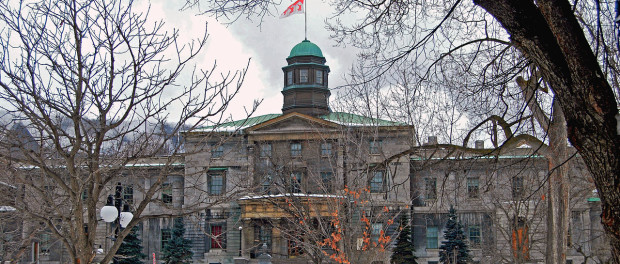Land Grants for McGill & Other Quebec Curios
James McGill was rich. He was so rich, in fact, he wanted the ultimate in immortality: a school named after him. Well, maybe that’s not how it goes exactly. In his will, McGill endowed his 47 acres of land and ten thousand pounds to the Royal Institution for the Advancement of Learning under the condition the school be named after him (so maybe that is how it goes) and that the school had to be built within ten years of his death: otherwise, the land and the money would go back to his wife. Ten thousand pounds—Fitzwilliam Darcy’s earnings per year for Jane Austen fans—is roughly equivalent to just under five thousand pounds, or about 925 000$, in today’s money.
McGill, the man (myth and legend optional) that is, died in 1813. Of course there would be legal battles with the wife and her heirs, but McGill University would forge on, and in 1821, King George IV granted the place a royal charter with the power to give degrees, and thus the madness started. Or so it didn’t: McGill University remained dormant until their medical school went into full operation (pun intended) in 1829. The Faculty of Arts, with its iconic dome-topped building that still stands today, would open its doors in 1843. And of course, McGill’s famous Faculty of Law would open five years after Arts.
Just as Laval did before them, McGill continued expanding. People living in the Golden Square Mile, the area around the base of Mount Royal, donated their mansions towards the advancement of the university. One such notable mansion is Ravenscrag, now the Allan Memorial Hospital on Pine Avenue (a psychiatric hospital notable for its implication in a secret CIA experiment to produce a drug tested on patients for mind control). In 1905, Sir William C. Macdonald donated a building that would become McGill’s Macdonald campus in Saint Anne de Bellevue; to accompany the influx of students after the Second World War, McGill would spill over into the building that is now Dawson College. A first for its time, McGill would start admitting women in 1884, with separate women’s lectures, of course.






